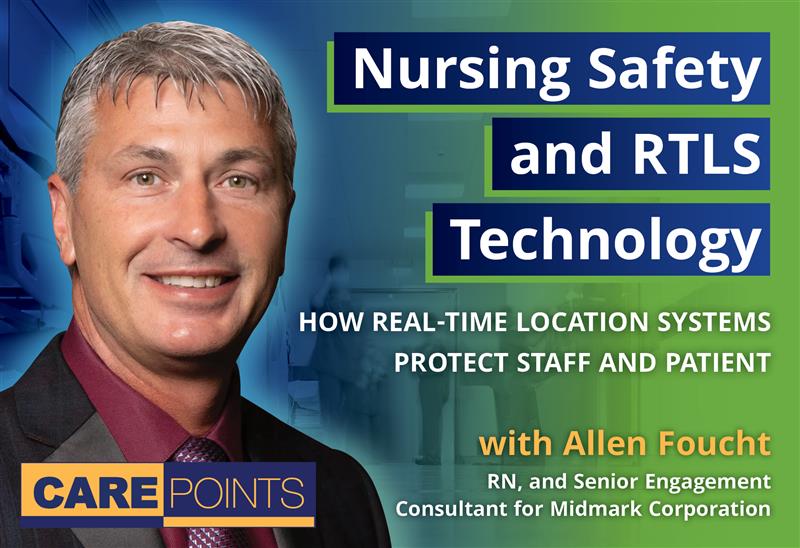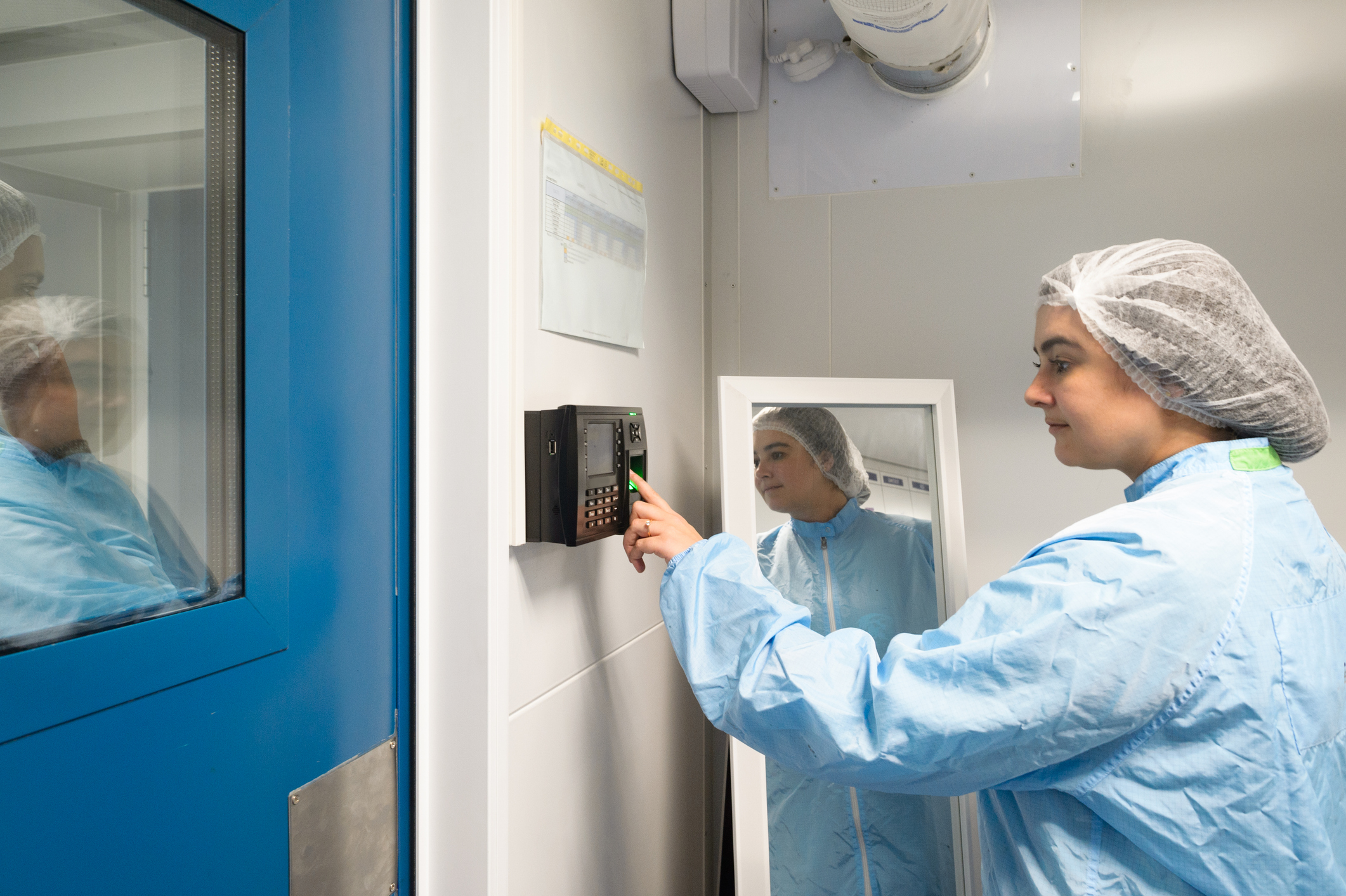
Picture this: A patient needs urgent care, and a nurse is rushing to find the right equipment, while precious time is slipping away. In these critical moments, knowing exactly where people and resources are can mean the difference between chaos and calm.
RTLS isn’t just about tracking, it’s about connection. By giving hospitals real-time visibility into staff, patients, and equipment, RTLS turns uncertainty into clarity and enables faster, smarter care. Midmark’s Allen Foucht helps health systems implement solutions that go beyond asset tracking, supporting staff safety, improving workflows, and elevating patient care. This awareness strengthens communication and security, allowing caregivers to focus on quality care while leaders optimize operations. RTLS is more than just technology; it’s a catalyst for safer environments and better patient experiences.

Staff Safety and the Role of RTLS
As RTLS were deployed, the duress was something that was considered to be optional. It is an important part of what technology can do to support an institution, especially with the growing threat of violence in the workplace.
According to Foucht, most nurses caring for patients need to have a discreet way to notify somebody that they’re in trouble, and in need of help. “RTLS provides that with minimal infrastructure, and they can automate messages to many different ways to EMRS, or to phones,” said Foucht.
Violence in healthcare doesn’t just happen in one area of the hospital. Foucht says when you think about just one area of the unit or behavioral health, you’re really missing the point of what RTLS can do.

Technology Evolution: From Wired to Bluetooth and Hybrid
Bluetooth Low Energy (BLE) has transformed RTLS deployment. Traditional systems require extensive ceiling wiring and months-long installations, driving up cost and complexity. BLE changes that equation with lightweight infrastructure, where sensors plug into walls or leverage Wi-Fi access points, allowing staff badges to be located within seconds.
This shift enables hospitals to roll out RTLS faster and more affordably, delivering broader coverage and quicker responsiveness. By eliminating heavy wiring, BLE makes facility-wide adoption practical, ensuring caregivers have consistent access to safety and workflow tools wherever they are.
Looking ahead, Midmark’s infrared BLE hybrid technology combines wireless infrared for room-level precision with BLE for broader coverage—without the wires. This approach lowers costs while supporting all use cases, offering granular location data and advanced analytics for smarter, safer care environments.

Why Facility-Wide Coverage and Usability Matter
Violence in healthcare can happen anywhere, not just in high-risk units. Limiting RTLS to select areas leaves dangerous gaps and erodes staff confidence. Facility-wide duress coverage reassures caregivers, making them feel safer and more supported.
Concerns about RTLS as a “Big Brother” tool must be addressed. Its purpose is safety and efficiency, not surveillance. Usability is critical, so Midmark integrates RTLS into badges and routines that caregivers already use, ensuring adoption is seamless.
Over time, full RTLS implementation delivers measurable benefits: stronger staff security, improved engagement, and cost savings from reduced equipment searches and fewer injuries. Most importantly, patients receive safer, more efficient care.
Facility-wide coverage and ease of use aren’t optional—they’re essential. By prioritizing safety, addressing privacy, and simplifying workflows, hospitals create reliable systems that protect caregivers, strengthen operations, and improve outcomes.
Allen Foucht is a seasoned healthcare professional and Senior Engagement Consultant at Midmark Consulting. Before moving into consulting, he served as an RN in high-pressure environments, including the emergency room and ICU, where he gained first-hand experience with clinical workflow, patient transport, and frontline safety challenges.
At Midmark, Foucht helps hospitals and health systems implement Real-Time Location Systems (RTLS) that go beyond simple asset tracking, designing solutions that support staff duress, improve workflow efficiency, enhance safety, and elevate patient care. His expertise is rooted in both the practical realities that nurses face and the evolving RTLS technologies, such as Bluetooth Low Energy (BLE) and hybrid sensor platforms.
Foucht is passionate about helping institutions adopt RTLS with full facility coverage—so staff feel protected everywhere in the hospital. He believes in deploying technology in ways that are intuitive for caregivers, driving adoption, and enabling safer environments for everyone.

©1991-2025 Lone Star Communications, Inc. and/or its affiliates.